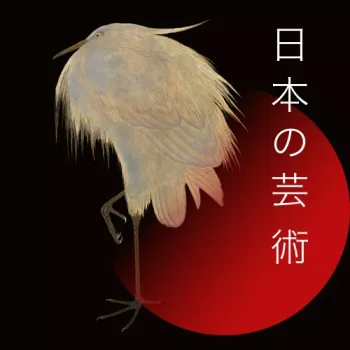Dagger (tantō) and scabbard dagger, c.1500; fittings, c.1868-71
Steel, lacquered wood, gold, ray skin, silk | 27.7 cm (blade length) | RCIN 62631
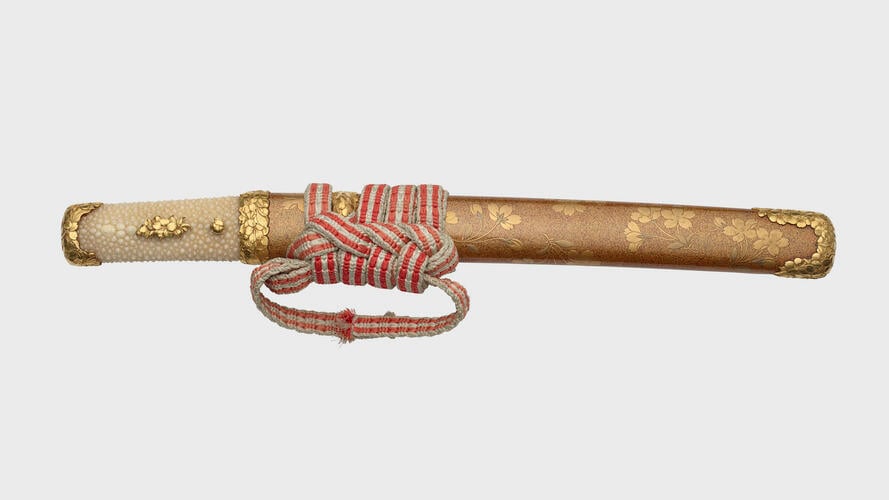
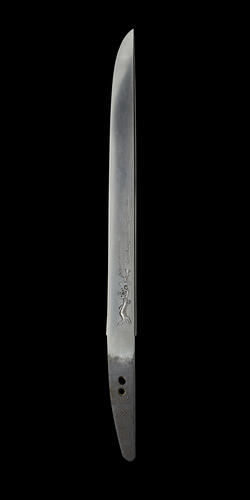

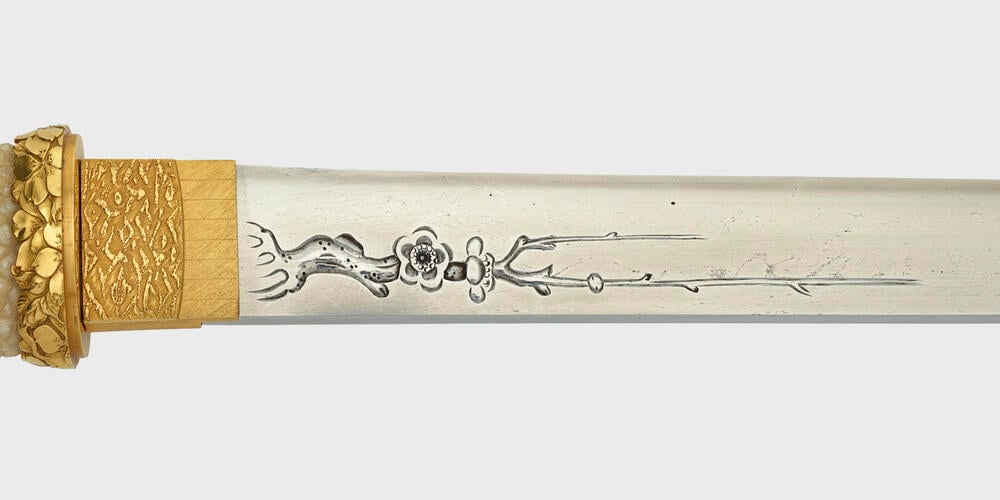
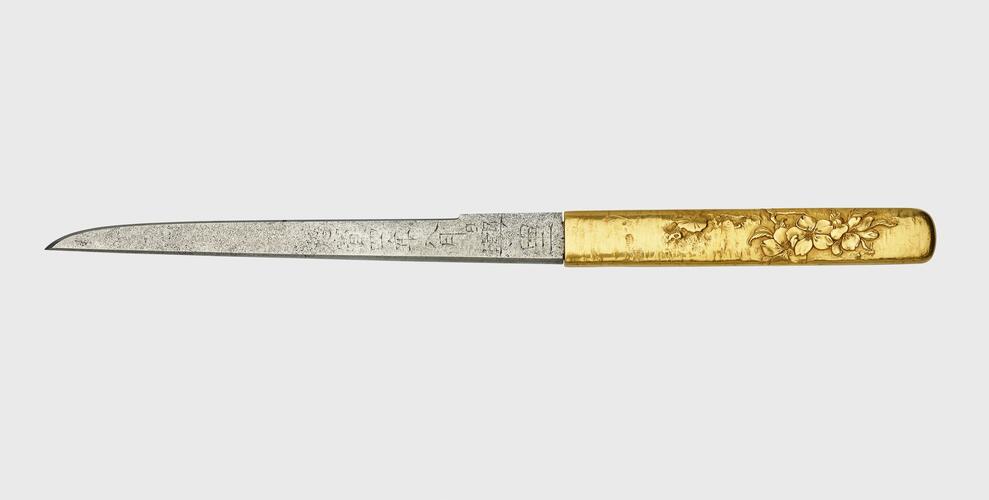
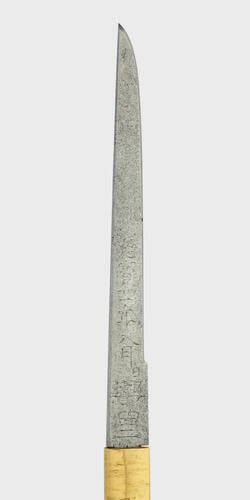
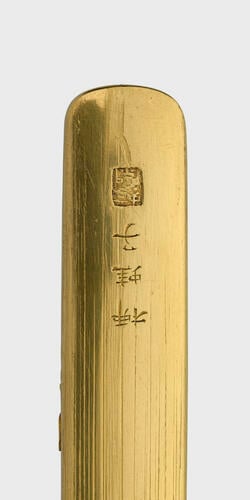
-
Remounting a good older blade with high quality contemporary mounts for a diplomatic gift follows a long tradition of presenting swords. The Emperor Meiji had many old blades, some as old as the Nara period (710–794), remounted by contemporary makers. According to the South Kensington Museum catalogue of 1872, Meiji designed the mounts for this blade himself.
They bear remarkable similarity to those on a tachi given by the Emperor Meiji to Sir Harry Parkes, the first British minister in Japan, in 1871 (V&A nos M.13:1, 2-1949). This tantō was a gift for Prince Alfred, Duke of Edinburgh, but it was not complete at the time of the prince’s stay in Japan, and instead sent to him after his return to England. It was presented at Marlborough House by Prince Higashi-Fushimi on 15 June 1871, ‘in remembrance of his Royal Highness’s visit’.
The dagger is mounted without a hand guard, a style known asaiguchi (‘meeting of mouths’). The lacquered scabbard is of the finest quality gold makie (sprinkled) lacquer with low-relief decoration of flowering cherry blossom. The solid gold fittings, including the side-knife (kogatana), are likewise decorated with cherry blossom. The collar (fuchi) of the scabbard carries the signature Nori tsukuru (‘Made by Nori’). This may be the abbreviated signature of Sekizenjō Chikanori (Chikanori II), a swordsmith and goldsmith of the Meiji period.The blade is signed on the tang (nakago) with the two characters for Kanehisa. Although there were a great number of smiths who signed this way, the dagger is most likely by one of two smiths who operated in Seki in Mino Province (part of modern-day Gifu Prefecture) who worked around the period 1490–1504. The tang also has two fixing holes, which indicate that the blade has had several mountings. The blade is decorated with a carving (horimono) of a flowering branch of plum blossom and has a gold collar (habaki) decorated with fine and broad carved lines. There is evidence of fine grain on the blade and the tempering pattern (hamon) is an almost straight (suguha) misty line.
Text adapted from Japan: Courts and Culture (2020)Provenance
Sent to Prince Alfred, Duke of Edinburgh by the Emperor Meiji, 1871
Sent from Windsor Castle for exhibition at The Japan-British Exhibition at White City, London, in 1910. -
Creator(s)
(nationality)Acquirer(s)
-
Medium and techniques
Steel, lacquered wood, gold, ray skin, silk
Measurements
27.7 cm (blade length)
38.3 cm (length)
3.5 cm (Width) x 3.3 cm (Depth); 37.5 cm (Length) (whole object)
Category
Place of Production
Japan





